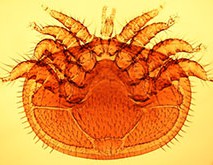12/01/2015 – 3:49 pm
Sneaking into Australia through northern ports just got harder for exotic bees and pests, with the installation of a network of 20 hives monitored by mobile phone cameras and sensors. The hives have been deployed as part of a national trial by the National Bee Pest Surveillance Program (NBPSP) in Brisbane, Gladstone, Weipa and Darwin […]
Read more



